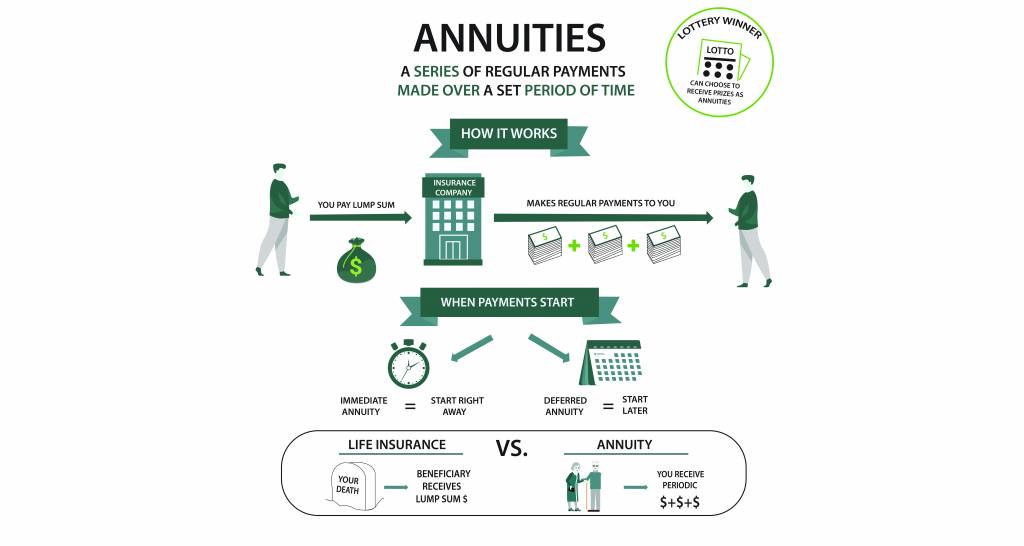All Categories
Featured
Table of Contents
Typically, these conditions apply: Proprietors can pick one or numerous beneficiaries and specify the percentage or repaired amount each will certainly receive. Beneficiaries can be individuals or organizations, such as charities, yet various policies request each (see below). Proprietors can change beneficiaries at any point during the contract duration. Proprietors can select contingent recipients in situation a potential beneficiary dies prior to the annuitant.
If a couple possesses an annuity collectively and one companion dies, the making it through partner would continue to receive settlements according to the regards to the agreement. To put it simply, the annuity continues to pay out as long as one partner continues to be active. These contracts, in some cases called annuities, can also consist of a third annuitant (typically a kid of the couple), who can be assigned to receive a minimum variety of payments if both partners in the original agreement die early.
Do you pay taxes on inherited Annuity Withdrawal Options
Right here's something to keep in mind: If an annuity is funded by a company, that service should make the joint and survivor strategy automated for couples who are married when retired life happens. A single-life annuity ought to be an option just with the spouse's composed permission. If you've acquired a jointly and survivor annuity, it can take a couple of types, which will affect your month-to-month payment differently: In this situation, the monthly annuity repayment remains the same following the fatality of one joint annuitant.
This type of annuity may have been bought if: The survivor wished to take on the economic obligations of the deceased. A pair handled those duties together, and the surviving companion wishes to prevent downsizing. The surviving annuitant receives just half (50%) of the month-to-month payout made to the joint annuitants while both were alive.
Are inherited Annuity Rates taxable income
:max_bytes(150000):strip_icc()/Death-taxes_sketch_final-422a2456bff64e4da2f9dabb41c64ad9.png)
Several contracts allow a surviving spouse detailed as an annuitant's recipient to convert the annuity into their own name and take control of the first contract. In this circumstance, understood as, the making it through partner ends up being the new annuitant and collects the remaining repayments as set up. Partners also may elect to take lump-sum repayments or decrease the inheritance in favor of a contingent recipient, that is entitled to get the annuity only if the key recipient is incapable or unwilling to accept it.
Paying out a round figure will trigger varying tax obligation responsibilities, depending upon the nature of the funds in the annuity (pretax or currently taxed). Taxes won't be incurred if the partner continues to obtain the annuity or rolls the funds into an Individual retirement account. It may seem strange to mark a small as the recipient of an annuity, yet there can be great factors for doing so.
In various other instances, a fixed-period annuity might be made use of as a lorry to fund a child or grandchild's university education and learning. Minors can't inherit money directly. An adult have to be marked to manage the funds, similar to a trustee. However there's a distinction in between a count on and an annuity: Any cash designated to a trust must be paid out within 5 years and does not have the tax obligation benefits of an annuity.
The recipient may then pick whether to get a lump-sum payment. A nonspouse can not generally take over an annuity contract. One exception is "survivor annuities," which offer that backup from the creation of the contract. One factor to consider to maintain in mind: If the assigned beneficiary of such an annuity has a partner, that individual will certainly have to consent to any type of such annuity.
Under the "five-year guideline," beneficiaries might delay declaring cash for up to 5 years or spread repayments out over that time, as long as every one of the cash is accumulated by the end of the 5th year. This permits them to expand the tax problem gradually and might maintain them out of higher tax brackets in any type of single year.
As soon as an annuitant passes away, a nonspousal recipient has one year to establish a stretch distribution. (nonqualified stretch provision) This style sets up a stream of income for the rest of the beneficiary's life. Due to the fact that this is set up over a longer duration, the tax obligation implications are normally the tiniest of all the alternatives.
Inherited Fixed Annuities tax liability
This is occasionally the instance with immediate annuities which can begin paying out promptly after a lump-sum investment without a term certain.: Estates, counts on, or charities that are beneficiaries need to take out the contract's amount within five years of the annuitant's fatality. Tax obligations are affected by whether the annuity was moneyed with pre-tax or after-tax bucks.
This merely suggests that the cash bought the annuity the principal has already been taxed, so it's nonqualified for taxes, and you don't have to pay the internal revenue service once again. Just the rate of interest you gain is taxable. On the other hand, the principal in a annuity hasn't been strained yet.
When you withdraw money from a certified annuity, you'll have to pay tax obligations on both the passion and the principal. Proceeds from an inherited annuity are treated as by the Internal Earnings Solution.

If you acquire an annuity, you'll need to pay revenue tax obligation on the difference between the major paid into the annuity and the worth of the annuity when the owner dies. If the owner purchased an annuity for $100,000 and made $20,000 in passion, you (the recipient) would pay taxes on that $20,000.
Lump-sum payments are tired all at when. This choice has one of the most extreme tax consequences, due to the fact that your income for a single year will be a lot higher, and you might wind up being pushed right into a higher tax brace for that year. Gradual payments are exhausted as income in the year they are received.

Just how long? The ordinary time is regarding 24 months, although smaller estates can be taken care of extra quickly (in some cases in just 6 months), and probate can be even longer for more intricate cases. Having a legitimate will can accelerate the procedure, but it can still obtain stalled if beneficiaries contest it or the court has to rule on that must administer the estate.
Long-term Annuities death benefit tax
Due to the fact that the individual is called in the contract itself, there's nothing to competition at a court hearing. It's essential that a certain individual be named as beneficiary, as opposed to simply "the estate." If the estate is called, courts will certainly check out the will to sort things out, leaving the will certainly available to being disputed.
This might be worth taking into consideration if there are reputable fret about the individual named as beneficiary diing prior to the annuitant. Without a contingent beneficiary, the annuity would likely then end up being based on probate once the annuitant dies. Talk with a monetary consultant regarding the possible advantages of calling a contingent beneficiary.
Table of Contents
Latest Posts
Exploring the Basics of Retirement Options Key Insights on Your Financial Future Breaking Down the Basics of Variable Annuity Vs Fixed Annuity Advantages and Disadvantages of Different Retirement Plan
Understanding Financial Strategies Everything You Need to Know About Fixed Vs Variable Annuity Pros And Cons Defining the Right Financial Strategy Features of Fixed Vs Variable Annuities Why Fixed Inc
Exploring the Basics of Retirement Options Everything You Need to Know About Variable Annuities Vs Fixed Annuities Defining Variable Annuities Vs Fixed Annuities Pros and Cons of Fixed Income Annuity
More
Latest Posts